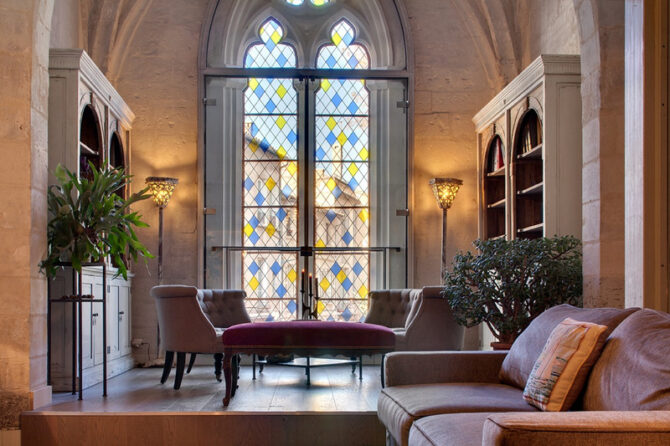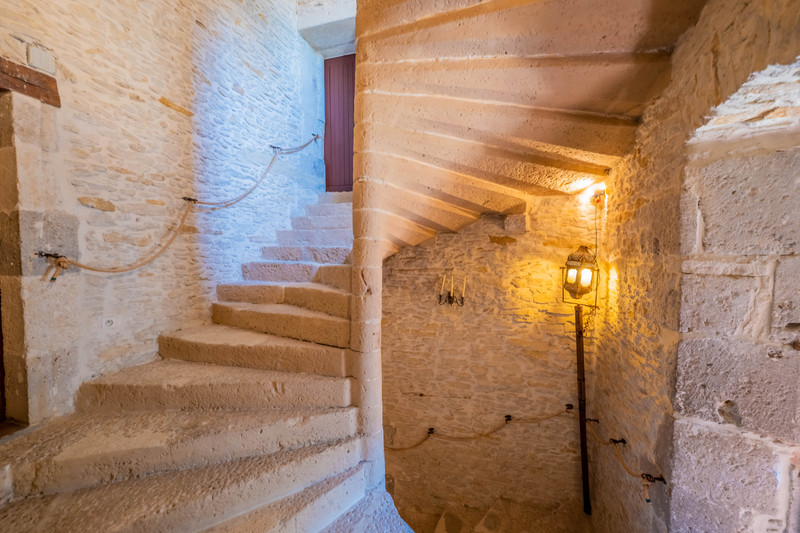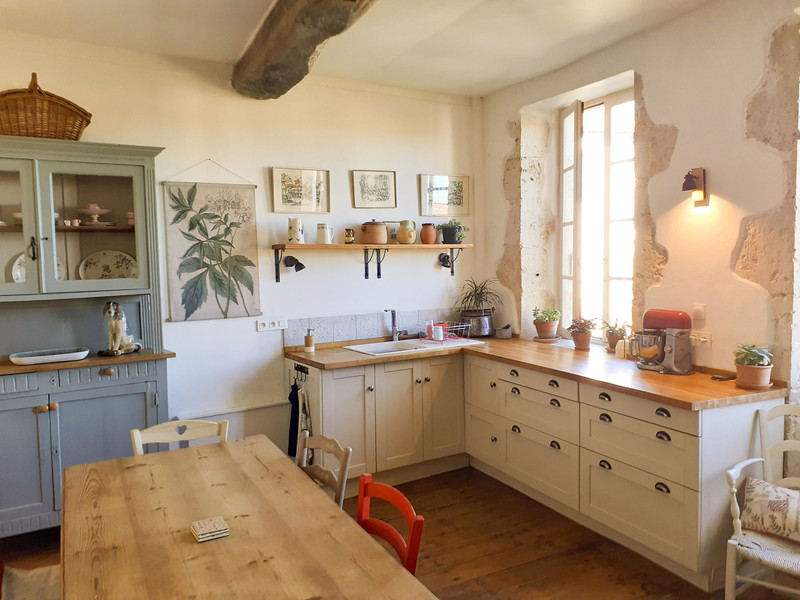Living in a historic French home

As I travel through France, at every turn it seems there’s another historic property to admire. Sometimes it seems there are more châteaux than I’ve had hot dinners! So steeped is this land in historic properties, we really are spoilt for choice.
Like in the UK, there is a French classification system to protect historic properties – preventing people from overhauling ‘ballroom wings’ or adding some 21st-century architectural novelty at whim. However, unlike in England and Wales, for example, where more than 400,0000 buildings are listed Grade I, Grade II* or Grade II, here in France considerably fewer homes are listed. The name Monument Historique (MH) is usually reserved for properties that are national treasures, such as Versailles and the Loire Valley châteaux as well as humbler châteaux, historic churches and manoirs. Nonetheless, the conservation body Architectes des Bâtiments de France (usually just known as Bâtiments de France or ABF) does an enormous amount to ensure the integrity of old towns and villages is retained.
My historic home in France
I am lucky to live in a house which dates back, in part, to the 13th century. When we first found it, I was told casually by the owners that the salon dated to those times. I’d already spotted the scallop shell engraved into the massive stone fireplace – the sign that pilgrims once stayed here on their long walk to Santiago de Compostela in Spain – and indeed my village is on one of the well-trodden routes. It was only on the day of moving that we spotted the soot-covered cross engraved in the stone on the back of the enormous fireplace, a symbol of the Knights Templar!
The rest of the house has been added to over the centuries. As is often customary with rural properties in France, this has seemingly been piecemeal. You can often determine when parts were added from the height of door-frames. If any guests slightly above average height have to duck their heads when passing through to the next room, you can guess it dates back at least a couple of hundred years.
I love showing visitors these amazing links to another time and a way of living far from the modern comforts which, thankfully, we’ve been able to sympathetically install. Living in an historic house truly brings together the best of both worlds – the character of the walls, the patina on the ancient wood and stone and the mature gardens.

Protected or listed buildings in France
Often when renovating old but unlisted properties, there’ll be no need for protracted major negotiations with local planning officers who might have a specific bugbear about connecting adjoining buildings with metal and glass rather than stone to ‘differentiate’ the addition. However, France, being France, does have its own rules and regulations set in place to protect the ‘patrimoine’. And thank goodness too. This is where the Bâtiments de France plays such an important role – after all, if you fell in love with the unspoilt charm of a village or town then you wouldn’t want some modern monstrosity shoehorned into a street of honey-coloured stone and russet-roofed houses.
So, if you’ve bought an old, historic building, where do you start? Of course, the first place is always your mairie. They’ll be able to advise you on what you will be allowed or not allowed to do, as well as any permissions you’ll have to seek. I live on the outskirts of a very small village and my path to renovating the interior of my home was pretty straightforward. However, changing the exterior of a property in France requires permission, especially if it’s in the centre of an historic town or village. You will need permission to alter windows, doors and other elements of the facade, and possibly even changes to your garden wall – especially if you are close to a medieval church with Monuments Historique (MH) classification. You will find this information at the mairie.
Conservation Areas
The French take considerable care to make sure historic buildings, villages, towns and areas are not spoiled, especially in designated conservation areas or close to buildings of special interest. In such areas there may well be stricter requirements when it comes to seeking planning permission (permis de construire) or making prior declarations of work (déclaration préalable). Before permission can be granted, it must be submitted to a qualified expert (an Architecte des Batiments de France) and the architect’s decision will be final.

Put simply, if your new home is within 500m of a classified historic monument such as an important church, you will need to replace like with like. No modern PVC doors or windows here! You will also have to conform to a specified paint colour for the shutters. If you’ve ever wondered why the shutters in French villages are all painted the same colour, now you know why! This colour can vary from region to region. Around where I live it’s a sort of French grey. In Brittany it might be marine blue and in the Basque Country (Pyrénées Atlantiques) burgundy or red. It ensures the character and history of the place you fell in love with and decided to make home remains.
If you want to alter the exterior and your home is within the 500m boundary, then it will come under the separate legislation of historic monuments and those of the ABF. And, if the property sits within an historic centre of a town, conservation area or national park it also falls under the jurisdiction of the ABF even if it’s further away than the requisite 500m. You often see old churches or châteaux with a smart plaque by their front doors or gates emblazoned with the logo ‘MH’. This is the Monument Historique plaque, the design of which was inspired by Reims cathedral where once all French kings were crowned.

If you are the owner of a listed property, you have a duty to preserve its heritage and are responsible for its upkeep and restoration, which can be expensive. If you are planning any works, it’s essential to obtain the correct authorisation before you start. Grants can sometimes be made available to assist with this.
Properties in villages carrying the Plus Beaux Villages de France label will also have strict rules to adhere to – again from the colour of your shutters to hiding satellite dishes. Other historic towns, such as St-Émilion, which is built from glorious local golden sandstone, will also have caveats. In essence, this simply means your investment is being protected from ill-judged or badly conceived extensions or alterations.
I consider myself the current custodian of my home’s history and have never been happier since I started living here. If you want to live in an historic property, remember to always seek qualified advice before you start and go and talk to the mairie. They are there to help.
Joanna Leggett is the Marketing Director of Leggett Immobilier and she regularly writes interesting articles with location guides, expert advice and a selection of properties in French Property News magazine
Looking for a historic home of your own?
Share to: Facebook Twitter LinkedIn Email


